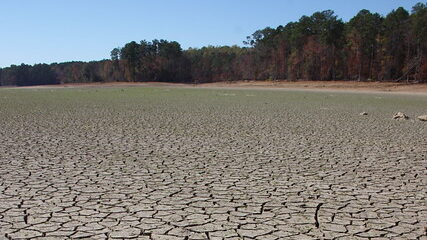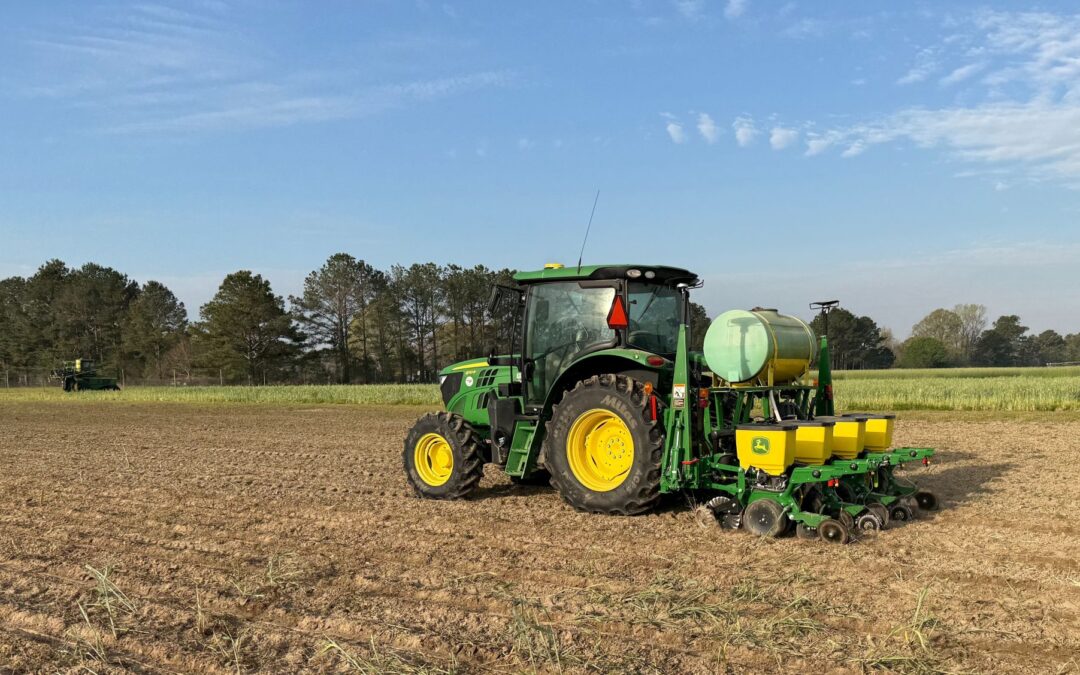Alabama has been a stranger to the rain several times during the past few years. To prepare the state with more than just a forecast, the Alabama Drought Reach (ADR) program provides climate data statewide.
The ADR program is a collaborative effort by the Auburn University Water Resources Center, Alabama Agricultural Experiment Station, Alabama Cooperative Extension System and the Alabama State Climatologist’s Office. Together, these partners coalesce relevant information and help the public prepare for changing conditions.
Kent Stanford, associate professor and specialist with Alabama Extension at Auburn University, said this statewide partnership is important to all Alabama residents.
“Partnering together to provide weekly updates is the best way to find success in this relatively new program that is still growing,” Stanford said. “Furthermore, communication among these agencies allows us to extend our reach and closely monitor our impact as we continue developing the program.”
The ADR program started in 2023 and continues to provide weekly online drought summaries accessible to anyone. Extension agents use an internal survey to complete an assessment of specific locations. Each Monday, the Alabama state climatologist receives this information and includes it in the state report submitted the U.S. Drought Monitor authors.
The U.S. Drought Monitor is a key resource for tracking conditions nationwide. As a result, data is widely used by researchers, policymakers and land managers. However, the U.S. Drought Monitor does not rely solely on statistics; it incorporates physical data with drought impacts. Moreover, approximately 450 experts contribute to ensuring data precision.
Farmers and landowners provide individual input through an online survey called Condition Monitoring Observer Reports (CMOR). This reporting system is managed by the U.S. Department of Agriculture and the National Oceanic and Atmospheric Administration. These entities collect data nationally and make it publicly available. Additionally, the data is used to determine drought conditions and evaluate areas of concern.
Anyone can submit a CMOR drought report for their local area on the Alabama Drought Reach website. Data is compiled and analyzed to generate updates. The survey has a few simple questions and allows users to upload a photo for visual drought analysis.
Stanford encourages Alabamians to participate in the program regardless of climatic conditions.
“We are pleased with the success of the buy in to the ADR program, but continued support is vital to maintaining data,” Stanford said. “Fortunately, people are very inclined to submit data when we are dry. However, once the rain comes, they tend to slack off, but we need hydrological data to provide the most accurate reports.”
Agricultural producers depend on the latest drought data being readily available. For that reason, the most valid information combines boots-on-the-ground assessments through the ADR survey. It also includes producer input through CMOR reports along with vast weather data from the state climate office. For example, in 2024, ADR generated 52 drought reports and 35 crop impact reports to give farmers insight into conditions affecting production.
Precise drought data collection is especially critical when crop insurance payouts begin to arrive. Farm Service Agency (FSA), an agency within U.S. Department of Agriculture, uses U.S. Drought Monitor categories to determine if a county qualifies for assistance programs. Therefore, it is critical that valid data is provided each week for the U.S. Drought Monitor to reflect verified conditions.
The Livestock Forage Disaster Program calculates payments to livestock forage producers based on the weekly U.S. Drought Monitor. As a result, timely on-the-ground data is crucial to these producers being able to fully benefit from disaster relief and recoup some of their loss. Consequently, this program is based solely on the drought severity and the number of weeks a county is in specific levels to qualify for the assistance.
In addition, Whole-Farm Revenue Protection through the U.S. Department of Agriculture’s Risk Management Agency also offers assistance with drought coverage for producers of varying commodities. Federal Crop Insurance Corporation, under the provisions of the Federal Crop Insurance Act, allows growers to purchase insurance coverage for their operations.
Brianne Minton, climate services coordinator for the Alabama State Climatologist’s Office, praised ongoing efforts among agencies.
“One of the biggest accomplishments has been creating that direct pipeline between Alabama Extension and our office,” Minton said. “Extension agents report drought conditions directly to the us via an internal survey. The climatologist’s office uses those impact reports to give more accurate information about Alabama drought conditions to the U.S. Drought Monitor. This ensures that we have a more accurate map of drought location and severity across the state.”
The Alabama Agricultural Experiment Station also plays an important role in data collection with ADR. Experiment Station outlying units are equipped with weather stations called Auburn’s Weather Exchange by Medius Ag. By combining ADR reports submitted by Alabama Extension and Experiment Station personnel at the outlying units with Auburn Weather Exchange data, the state achieves more comprehensive drought monitoring.
“Our collaborative approach enables us to provide timely drought information to the public, especially to our growers who rely on it,” Stanford said.
More Information
To contribute to the collective effort and report conditions at your location, visit the Alabama Drought Reach website at aaes.auburn.edu/wrc/extension-outreach2/al-drought-reach.





